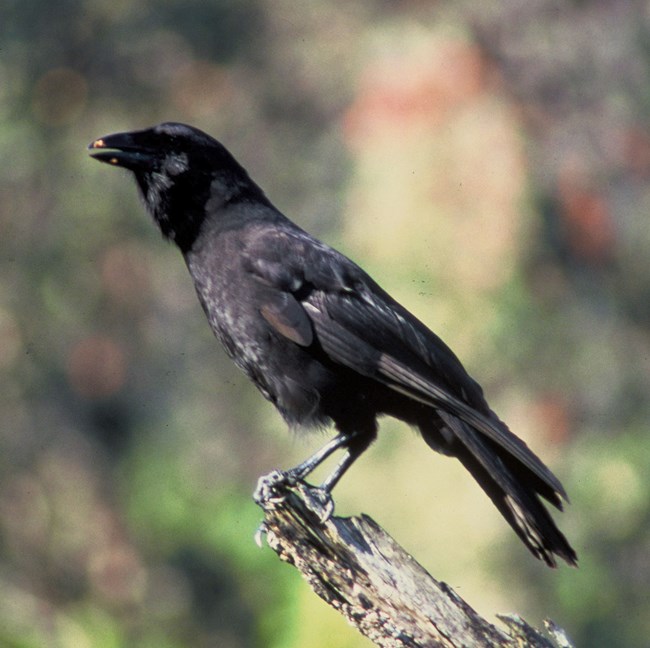

Recovery from the Brink of ExtinctionIt is difficult to imagine that less than a century ago ʻalalā (Corvus hawaiiensis) known as the Hawaiian crow were once commonly found on the island of Hawaiʻi. Unfortunately, today they are one of the most endangered species of crow in the world. Although there had been many attempts to reestablish ʻalalā back into their native habitat, it was not until recently that a reintroduction might be a real possibility. The ʻAlalā Project, a joint project involving many partners, is working to create a wild self-sustaining population of ʻalalā. For decades conservationists have been working on recovery through habitat management, predator control, and post-release monitoring. Beginning in 2016, the first release of 12 birds occurred in the Puʻu Makaʻala Natural Area Reserve. Unfortunately, shortly after the release, one ʻalalā died by the predation of the endemic ʻio (Hawaiian hawk) and another lost from not being able to find enough food. The reintroduction plan was adjusted after these events and the surviving two birds were brought back into the conservation breeding program. Implementing changes to the reintroduction plan, the next release took place in 2017. During a four-year period 30 birds were incrementally released into the wild in groups. The released ʻalalā gained valuable skills about foraging, predator avoidance, and other social behaviors like pair bonding and nest building. However, after a series of unfortunate mortalities in October 2020, conservationists decided to bring the five remaining birds back into the conservation breeding program. The hope is that the surviving birds can pass on the skills they developed while in the wild to aid in future release efforts. While release efforts are on hold, conservation work continues to aid in future releases. The history of ʻalalā tells the hardships and successes of every ongoing conservation story. Invasive predators, diseases, and habitat loss continue to push the ʻalalā to the brink of extinction. Efforts continue with the hope that ʻalalā one day can fulfill their natural role in restoring forest understories. Additional Resources: |
Last updated: February 18, 2022
